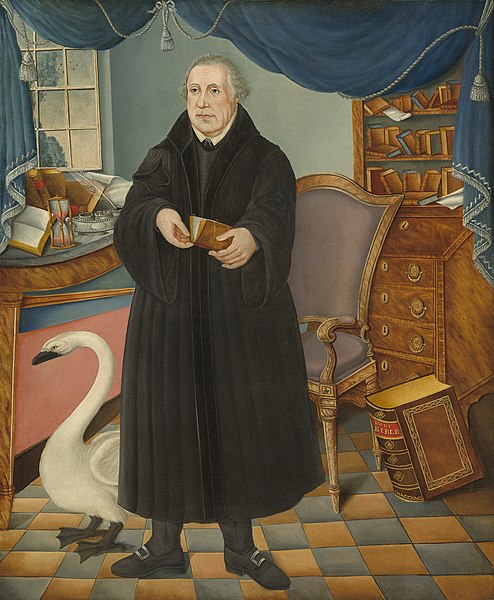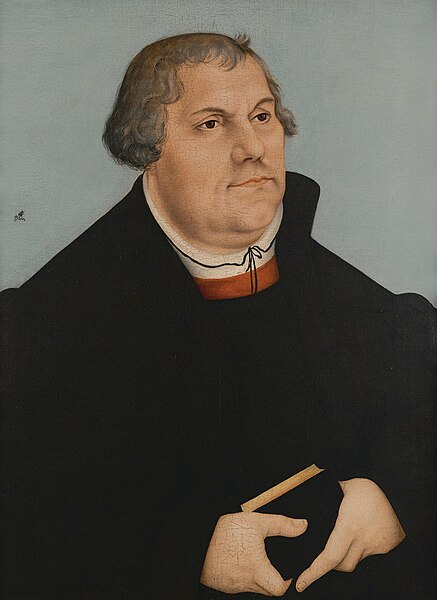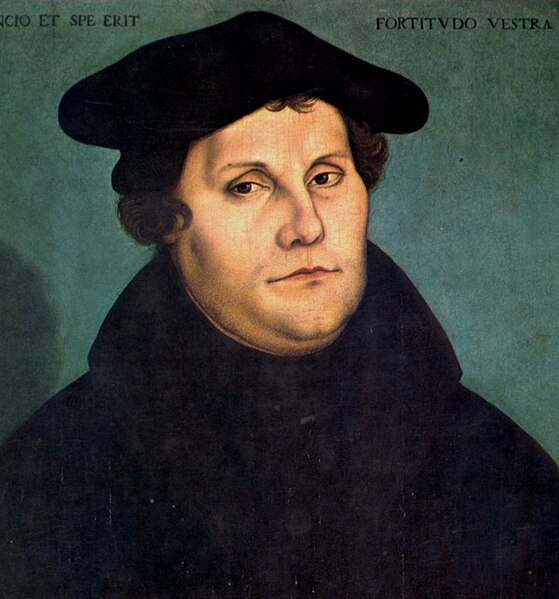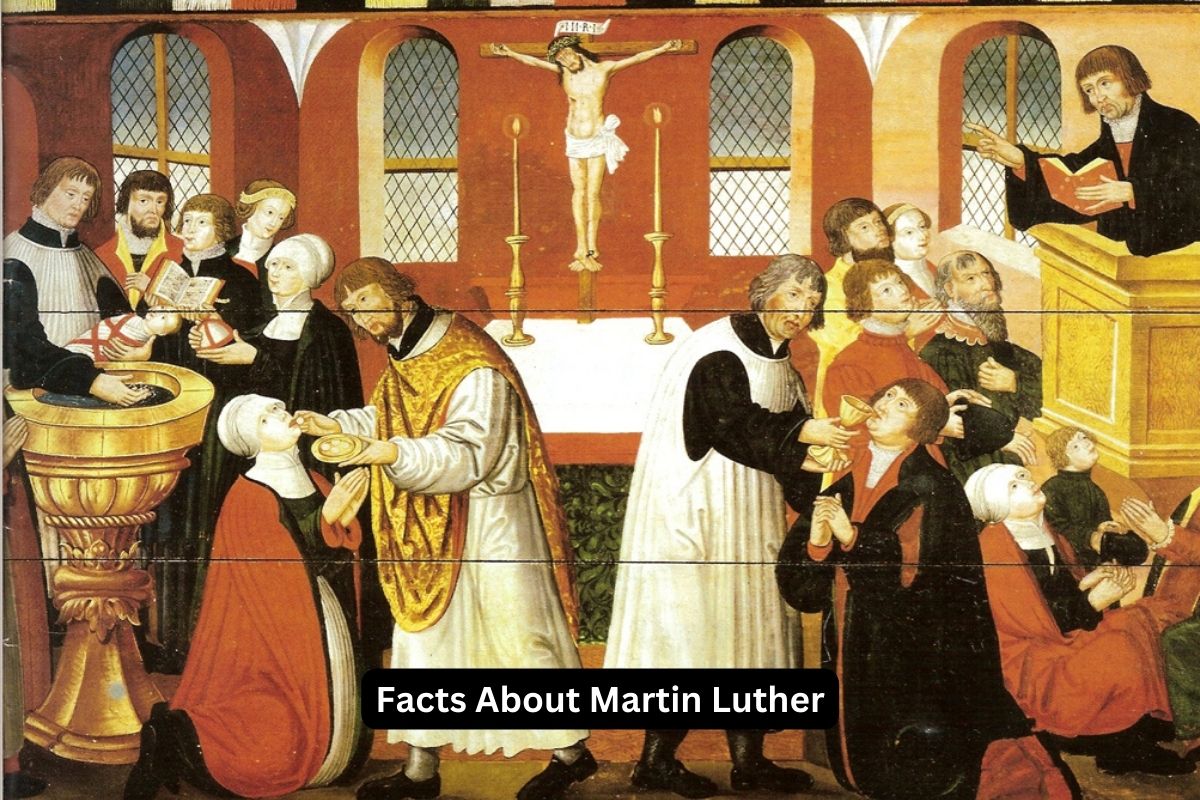Martin Luther, born in Eisleben, Germany in 1483, was a key figure in the Protestant Reformation. His posting of the 95 Theses in 1517 on the door of the Castle Church in Wittenberg challenged the Catholic Church’s sale of indulgences and sparked a theological debate.
Luther’s core belief in justification by faith alone became a cornerstone of Protestant theology.
He translated the Bible into German, making it accessible to more people and shaping the German language. Luther’s unyielding stance on his beliefs, evident in his famous declaration at the Diet of Worms in 1521, led to his excommunication from the Catholic Church.
Luther’s legacy lives on through the Lutheran tradition, and his impact extends to education, politics, and culture. He passed away in 1546, but his influence on Christianity and Western thought remains profound.
Martin Luther Facts
1. Born on November 10, 1483, in Eisleben, Germany
Martin Luther was born in the town of Eisleben in Saxony, Germany. He was born into a relatively humble family.
His father, Hans Luther, worked as a copper miner, and his mother, Margarethe Luther, came from a prosperous family of businesspeople.
Luther’s birthplace is now a historic site and museum dedicated to his life and legacy.

2. Studied at the University of Erfurt
After completing his early education, Martin Luther attended the University of Erfurt, one of the most prestigious universities in Germany at the time.
Also Read: Accomplishments of Martin Luther
He entered the university in 1501 and studied various subjects, including law, philosophy, and the humanities. It was during this time that Luther began to question his path in life and underwent a profound spiritual transformation.
3. Became a monk in 1505
In 1505, at the age of 22, Luther experienced a life-altering event that led him to make a dramatic decision. While traveling during a severe thunderstorm, he was struck by lightning.
In his terror, he prayed to St. Anne, the patron saint of miners, promising to become a monk if he survived. Luther survived, and true to his vow, he entered the Augustinian monastery in Erfurt later that year.
Also Read: John Calvin Timeline
This decision marked a significant turning point in his life, as he abandoned his legal studies and embarked on a path of religious devotion and study as a monk
4. Nailed his 95 Theses to the church door in Wittenberg in 1517
On October 31, 1517, Martin Luther, who was by then a professor of theology at the University of Wittenberg, is said to have nailed a document known as the “95 Theses” to the door of the Castle Church in Wittenberg, Germany.
This document was a list of 95 theological points that Luther wanted to debate within the Catholic Church.
Also Read: Lutherans Facts
His primary concern was the sale of indulgences, which were essentially certificates that offered the forgiveness of sins and were sold by the Church to fund various projects, including the construction of St. Peter’s Basilica in Rome.
Luther’s action is considered the catalyst for the Protestant Reformation, as it ignited a widespread discussion about Church practices and doctrine.

5. Sparked the Protestant Reformation
Luther’s posting of the 95 Theses and his subsequent writings and teachings ignited a religious and social movement known as the Protestant Reformation.
This movement challenged the authority of the Catholic Church and sought to reform what many saw as corrupt practices within it. Luther’s key theological principle was justification by faith alone (sola fide), which emphasized that faith in Jesus Christ was the sole means of salvation, not deeds or indulgences.
The Reformation led to the emergence of various Protestant denominations, including Lutheranism, Calvinism, and others, and forever altered the religious landscape in Europe and beyond.
6. Translated the Bible into German
One of Luther’s most significant contributions was his translation of the Bible into the German language. Prior to Luther’s translation, the Bible was primarily available in Latin, which was inaccessible to most common people.
Luther believed that everyone should have access to the Scriptures in their native language. He began this monumental task in 1522, and by 1534, he had completed the translation of the entire Bible into German.
This translation not only made the Bible more accessible but also had a profound influence on the development of the German language, helping to standardize it.
It remains one of the most important literary works in the history of the German language and played a crucial role in the spread of Protestantism.

7. Defended his beliefs at the Diet of Worms in 1521
In 1521, Martin Luther was summoned to appear before the Diet of Worms, an assembly of the Holy Roman Empire. At this assembly, he was called upon to recant his teachings, which had challenged the authority of the Catholic Church.
Luther famously declared, “Here I stand; I can do no other,” refusing to recant his beliefs unless convinced by Scripture or clear reasoning.
His steadfastness in the face of potential persecution and excommunication solidified his status as a key figure in the Protestant Reformation. Although he was ultimately declared an outlaw, his ideas continued to spread.
8. Excommunicated from the Catholic Church in 1521
Following his refusal to recant at the Diet of Worms, Pope Leo X issued a papal bull in 1521, officially excommunicating Martin Luther from the Catholic Church.
This excommunication marked Luther’s formal separation from the Church, and he was subsequently labeled a heretic. Despite this, Luther remained a prominent leader in the emerging Protestant movement.
9. Married Katharina von Bora in 1525
One of the most unconventional aspects of Martin Luther’s life was his marriage to Katharina von Bora, a former nun.
In 1525, Luther and several other ex-monks and nuns, including Katharina, left their religious orders. Luther assisted these individuals in finding new homes and even spouses.
He himself married Katharina, and their union was seen as a symbolic break from the celibacy of the clergy within the Catholic Church. Their marriage was successful and produced six children, with Luther often affectionately referring to his wife as “Katie.”
10. His legacy includes the Lutheran Church and significant religious reform
Martin Luther’s legacy is immense. His theological teachings laid the foundation for the Lutheran tradition and influenced the broader Protestant Reformation. Luther’s emphasis on faith alone (sola fide), grace alone (sola gratia), and scripture alone (sola scriptura) became central tenets of Protestantism.
The Lutheran Church, named after him, remains a significant branch of Protestant Christianity. Luther’s translation of the Bible into German contributed to the spread of literacy and the Reformation.
His influence extended to areas beyond religion, including education, politics, and culture, helping to shape the modern world in profound ways. Luther is remembered as a key figure in the history of Christianity and Western civilization.
